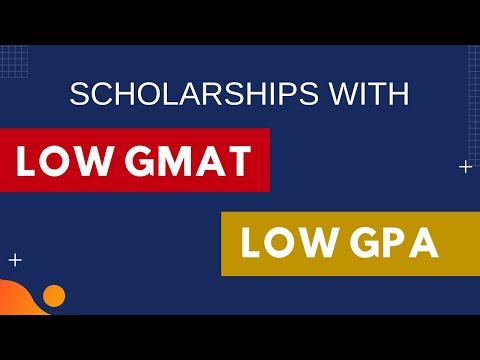Unlike the Indian MBA scene, MBA at most top schools abroad doesn’t allow an applicant to opt for a particular stream right away.
Most MBA applicants believe they don’t stand a chance at MBA admissions with a low GMAT score. Scholarships don’t even cross their mind. This belief is embedded in Indian MBA applicants through years of conditioning. The Indian education system highly backs merit-based scholarships.
However, with international MBA programs, merit-based scholarships aren’t the only option.
Here are success stories of some of OUR ROCKSTAR MBA Applicants who cracked top MBA despite Low Score:
Indian Male Engineer with GMAT 720 Admitted to Stanford & IIM Ahmedabad
Check PythaGURUS Success Stories
Kshitij cracks Schulich Business School with a low GMAT score.
How Gaurav cracked HKUST with a low GMAT score?
How S. Bhatt cracked Canada’s #1 School despite a GMAT 620, and a gap year in Undergrad?
How do MBA scholarships work?
As you must know by now, MBA admissions aren’t based merely on your statistics. Business school admissions committees do look at the various numbers on your profile but are equally invested in your story, and essays.
Business schools like Wharton have been known to accept applicants with GMAT scores as low as 500 to their MBA program as well. These applicants have other elements in their profiles in addition to a strong network with the business school.
All top business schools are looking for well-rounded candidates to add to their MBA program. Their idea is to create a diverse group of students who resonate with the school’s value and add to the experience of their classmates.
To make sure they get the right students onboard, they do not shy away from spending money. For instance, the decision-makers at Rotman School of Management of the University of Toronto, one of the top MBA programmes in Canada, have been known to sanction aid worth $210,000 in less than an hour of decision-making!
The fact that they have approximately $4 million set aside for the scholarship funds says a lot about the distance a business school would go to retain good MBA applicants.
This is on par with some of the best business schools in the US, such as Yale. And yet, there are still other schools, such as Ross (University of Michigan) and Anderson (UCLA) that offer even larger scholarship amounts. Any MBA applicant who makes an impact on the minds of the admission officers can thus get very good scholarships, which can potentially cover not just tuition, but also some amount of living costs. This is especially useful for international candidates.
The Top business schools in the industry have one goal in mind when they allot scholarship funds to the committee. They want the most talented candidates to join their business school to create a top-ranked class. They are not afraid to invest money in securing skilled individuals and will go all out for the perfect MBA applicants. Quality intake of students ensures that in a few years, their graduates will go out and represent the business school, hence increasing their overall ranking in the market.
In short, if your profile adds value to the school’s MBA class and is unique, chances are you’ll receive a scholarship offer from the school. Many business schools consider all MBA applicants for common scholarships. So, you don’t required to fill them in separately. Remember, business school scholarship deadlines generally fall before the MBA application deadlines. Thus, check for the same before starting your applications.
What is a good GMAT score for MBA Scholarships?
Although in the previous segment I spent time explaining to you why exactly a low GMAT score doesn’t remove you from the race to a scholarship, having a good GMAT score doesn’t hurt. Having a high GMAT score would improve your chances of receiving a scholarship.
What is a good score for MBA scholarships though? A good GMAT score for MBA scholarships would be any score above the average GMAT score of your target school.
Here are the average GMAT scores of the top 25 Business School.
| Business School | Average GMAT Score |
| Stanford | 734 |
| UPenn (Wharton) | 732 |
| Chicago (Booth) | 730 |
| Northwestern (Kellogg) | 730 |
| Harvard | 730 |
| MIT (Sloan) | 727 |
| Columbia | 727 |
| UC-Berkeley (Haas) | 725 |
| Dartmouth (Tuck) | 723 |
| Yale SOM | 721 |
| NYU (Stern) | 721 |
| Michigan (Ross) | 719 |
| UCLA (Anderson) | 719 |
| Virginia (Darden) | 713 |
| Rice (Jones) | 710 |
| USC (Marshall) | 708 |
| Duke (Fuqua) | 705 |
| Texas-Austin (McCombs) | 704 |
| Cornell (Johnson) | 697 |
| UNC (Kenan-Flagler) | 697 |
| Washington (Foster) | 695 |
| Washington (Olin) | 695 |
| Georgetown (McDonough) | 694 |
| Carnegie Mellon (Tepper) | 687 |
| Emory (Goizueta) | 684 |
Scholarships you can get with a Low GMAT Score
Since business schools do not set a GMAT score limit to their scholarships, applicants can apply for any available scholarship at a business school as long as they fit the remaining criteria.
However, since merit-based scholarships will be evaluated based on academic performance, and scores on standardized tests, an applicant with a low GMAT score should still be looking at any other financial aid options they can avail.
Financial aid options come in various forms. The three most popular financial aid options, that aren’t merit-based, are:
Need-Based Scholarships
This is the most popular form of scholarships for top business schools in the US. these scholarships are doled out to students from weaker financial backgrounds, as the name suggests.
Top business schools like Harvard boast of giving out need-based scholarships to over 80% of their student body. According to Harvard, while no student receives a full-ride, many students end up paying merely USD 12,000 in tuition at the program.
Need-based scholarships can be found in the Financial Aid section of a business school’s website.
External Sponsorship
External sponsorships are scholarships provided by any source outside the business school. These could be various trusts or organizations that provide scholarships to prospective students every year. Or it could be your firm sponsoring your MBA education in return for you re-joining post-MBA.
Some external scholarship provided to Indian students are:
- McKinsey Emerging Scholars Program
- Khosla Booth Private Equity Fellowship
- Orbis Investment Management MBA Fellowship
- The Aga Khan Foundation
- KC Mahindra Education Trust
Fellowships/Scholarships after starting the MBA Program
A lot of students get accepted to business school without scholarships. That doesn’t mean they do not get another chance to receive financial aid.
Many top business schools provide existing students with a chance to apply for various fellowships and scholarships to pay for their tuition in either the second semester of the second year of their MBA program.
- Fellowships:
A fellowship is a monetary award given to students for a venture, or due to exceptional performance in school.
- Scholarships in the second semester/year:
These are scholarships that are open and available to students that have performed well in the first semester of their MBA program.
How to improve your chances at Scholarships with a low GMAT score?
Here are the aspects of your Profile that you need to focus on to improve your chances at MBA scholarships despite a low GMAT score.
Networking
Pre-MBA networking is one of the most amazing aspects of MBA applications. It can help both an MBA applicant and the business school understand how good a fit they are for each other. Also, it can help you show the business school how committed you are to their values and their MBA program.
Having a game plan to network with as many alumni, current students, faculty members, or admissions committee members at your target school will make your networking activities easier.
It will also help you make the most out of every interaction you have with a member of the school.
While talking to the school representatives you will end up sharing a lot of details from your profile. This is a great chance to address the shortcomings in your MBA profile. However, there are other places you can use to address your low GMAT score.
The additional essays
Use your additional essays to address your Low GMAT score. The idea is to clarify that your GMAT score doesn’t define your capabilities of handling the MBA program and to do it before the school asks you for an explanation.
Make the school understand that you aren’t trying to hide it. Also, you need to make sure that the school knows your complete story. This is not a two-way street of communication.
The school will only be able to ask you questions in the next stage which is the interview. But you need to make sure that any doubts they might have due to your low GMAT are dealt with early on so that you don’t get rejected before the interview stage.
Work on the rest of your profile
Since you have a low GMAT score, the rest of your profile needs to make up for it if you wish to stand a chance at scholarships.
This means your letter of recommendation needs to be glowing, essays need to be authentic and vulnerable, and the resume needs to be detailed yet concise.
Add extra-curricular activities/ NGO experience
This one isn’t something you can do right when you start your applications. However, having string extra-curricular activities, and community/NGO experiences in your MBA application significantly affects your chances at a scholarship.
These experiences showcase your profile as being well-rounded, which is a very attractive aspect to a business school admissions committee.
Even with a high GMAT score, applicants that have extra-curricular activities and community/NGO experiences in their MBA profiles have a higher rate of success with scholarships during MBA admissions.
Start your MBA journey with networking as it will provide you with great insight into what your target business school considers important. Use this information to create the rest of your profile. However, don’t twist this advice into trying to become the perfect candidate as per what you learnt through networking. Instead, use your knowledge to find commonalities between what the school prefers in a candidate and what your profile has.
Have a great MBA admissions cycle!
Also Read:
How to get an admit to NYU’s Stern School of Business?
How to crack University of Virginia’s Darden School of Business?





